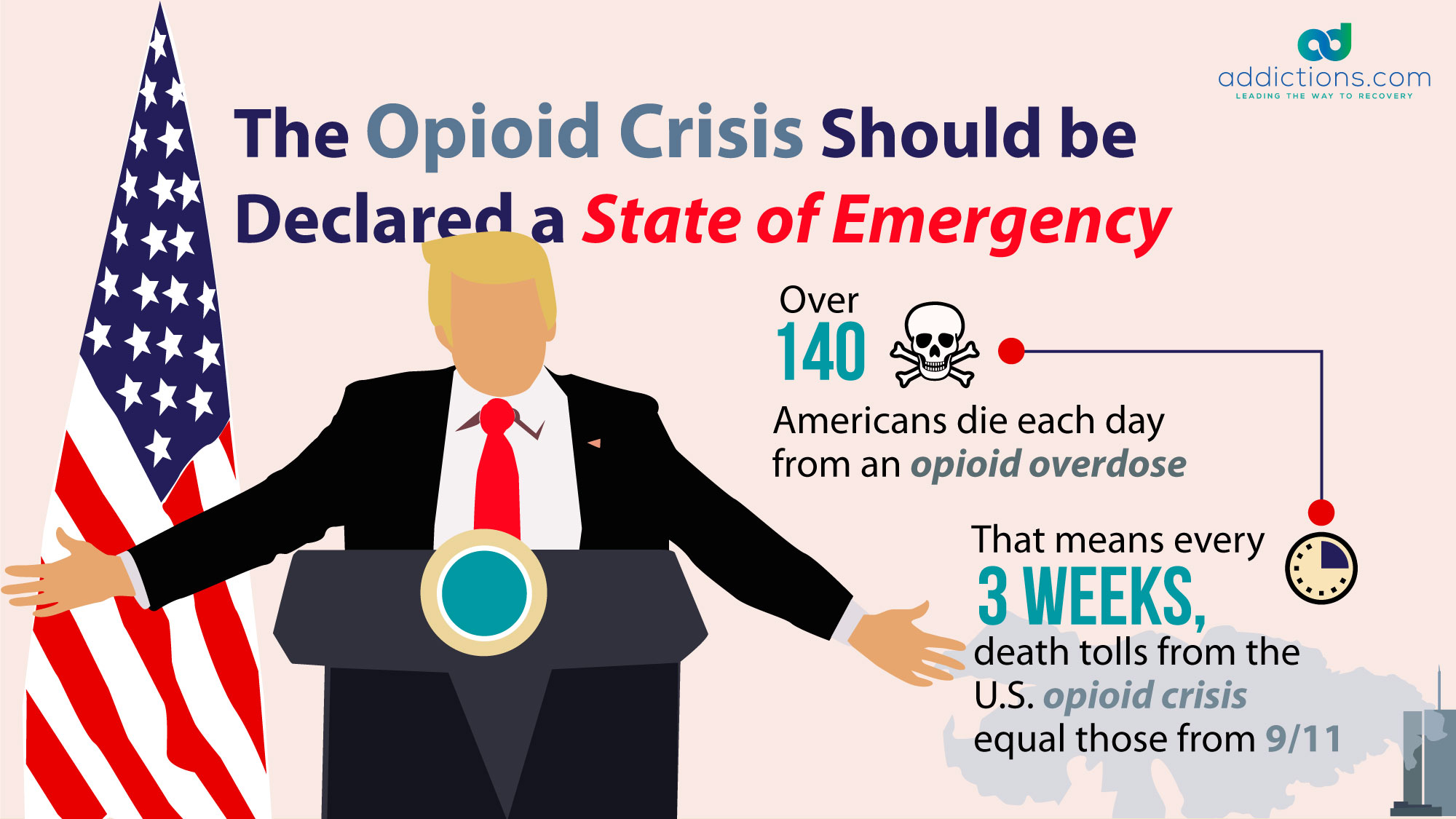Addictions.com has published a case study examining using a public health emergency to fight the opioid epidemic versus using a national state of emergency to do so.
In October 2017, President Trump declared the U.S. opioid epidemic a public health emergency. This came just two months after promising to designate the crisis a national emergency, which would have allowed funds usually reserved for disaster relief to be reallocated to fight the tide of opiate overdoses that killed over 59,000 Americans in 2016 alone.
More than 140 Americans die every day from an opioid overdose, and the annual death toll rose by 22% between 2015 and 2016, with projections indicating an even bigger increase by the end of this year. The case study points out that a national state of emergency would allow assistance to come from a range of federal departments that could collectively apply diversified energies towards the crisis, as well as provide a much larger pool of funding. These funds could be used to pay for a range of proven interventions, such as increasing the availability of Naloxone, a drug that reverses the effects of opioid overdose; and expanding access to effective opioid addiction treatment.

The Addictions.com case study explains that declaring a public health emergency will allow for exemptions to certain health-related mandates, such as allowing Medicare patients to receive opioid addiction treatment from out of network providers and for extra resources to be released or redistributed, such as directing Department of Labor grant money to workers struggling with opioid addiction. Other components of the Trump Administration's plan involve swiftly hiring specialists to assist with the crisis, increasing treatment access by expanding telemedicine services to rural areas, a new initiative for the development of nonaddictive painkillers, strengthening efforts to block the potent synthetic opioid fentanyl from entering the United States from China, and requiring training on opioid safe practices for federally-employed prescribers.
Each of these measures has value, but many experts and policymakers feel that they simply aren't enough. A public health emergency expires after 90 days, and although it can be immediately renewed by the President, starting off with such a short policy life seems woefully inadequate for a complex issue that will require long-term planning and solutions—as well as a great deal more money than what is available.
Officials within the Trump administration feel that the very complexity of the opioid crisis, which can be used to argue for a national state of emergency, can also be used to argue against it. They insist that public health officials are better equipped to deal with the opioid epidemic through the specialized approach of a public health emergency, and a national state of emergency would not be helpful. They also feel it would put too much of a burden on the Federal Emergency Management Agency's Disaster Relief Fund, which has been recently tapped by three major hurricanes. Please view the Addictions.com case study for further information: https://www.addictions.com/drug-addiction/what-does-a-state-of-emergency-mean-for-the-opioid-epidemic
Related Links
Addiction News
Addiction Education
Related Images

Press Release Service by Newswire.com
Original Source: Addictions.com Publishes Case Study on Fighting the Opioid Epidemic: Public Health Emergency vs. National State of Emergency